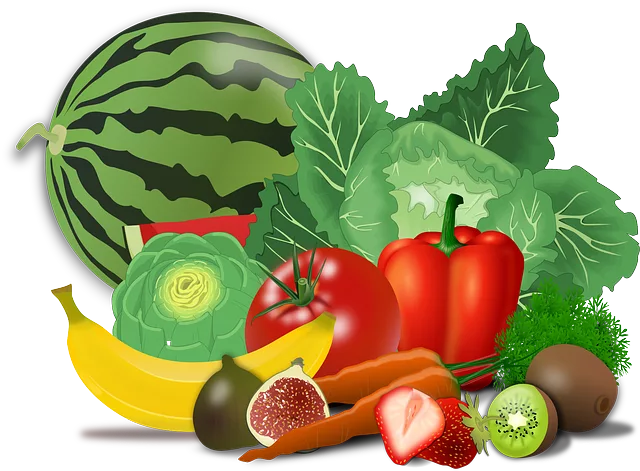Local food delivery services can transform your meal planning by providing fresh, locally-sourced ingredients that support community economies and reduce your carbon footprint. These services offer a wide range of dietary options including organic, vegan, and gluten-free products, catering to individual nutritional needs and preferences. They also simplify the grocery process, allowing you to enjoy healthier and more flavorful meals without the hassle of traditional shopping. Integrating these services into your meal preparation can lead to a balanced diet that's both convenient and cost-effective, thanks to smart shopping habits like taking advantage of sales and seasonal products, utilizing loyalty programs, and practicing mindful portioning. This approach not only enhances your culinary skills but also contributes to sustainable living and financial prudence. Keywords: Local Food Delivery, Meal Preparation.
Embarking on a journey of culinary efficiency begins with mastering meal planning and strategic grocery shopping, particularly when leveraging local food delivery services. This article navigates the intricacies of crafting a balanced weekly menu that aligns with your dietary needs while integrating the benefits of local food delivery. We delve into the art of smart grocery selections, ensuring freshness and minimizing waste. From meal preparation techniques to organizing your groceries for extended shelf life, this guide provides actionable strategies to streamline your culinary routine. Discover how to create a customizable meal plan template suitable for any lifestyle, build flexible shopping lists, compare local food delivery options, and embrace the impact of seasonal produce on your diet. Additionally, explore time-saving meal prep ideas, the environmental and economic advantages of these practices, and innovative ways to repurpose leftovers. Whether you’re a novice or an experienced home cook, this article serves as a comprehensive resource for enhancing your meal planning and grocery shopping experience with local food delivery at its core.
- Understanding Local Food Delivery: Benefits and Availability
- Meal Planning Essentials: Setting Goals and Defining Dietary Needs
- Crafting Your Weekly Menu: Balance, Variety, and Nutritional Considerations
- The Art of Grocery Shopping: Tips for Efficient and Cost-Effective Provisions
Understanding Local Food Delivery: Benefits and Availability

Embarking on a journey with local food delivery services can significantly enhance your meal planning and preparation routine. These services offer the convenience of having fresh, locally-sourced ingredients delivered directly to your doorstep, eliminating the need for extensive grocery shopping. The benefits of opting for local food delivery are manifold; it supports local farmers and economies, reduces the carbon footprint associated with transportation, and ensures that meals are prepared with peak-fresh produce. By integrating these services into your meal preparation regimen, you can streamline the process of acquiring ingredients, thereby saving time and reducing the stress often associated with meal planning.
When it comes to availability, local food delivery options have become increasingly accessible across various regions. Many areas now host a plethora of platforms that connect consumers with nearby producers, offering a diverse range of products from fruits and vegetables to meats, dairy, and specialty items. These platforms often provide filters to sort by dietary preferences, such as organic, vegan, or gluten-free selections, catering to individual needs and dietary restrictions. The ease of use and the variety of options available through local food delivery make it an attractive alternative to traditional grocery shopping, enhancing the overall experience of meal preparation with fresh, quality ingredients.
Meal Planning Essentials: Setting Goals and Defining Dietary Needs

Embarking on a meal planning journey begins with setting clear goals that align with your dietary needs and preferences. This foundational step ensures that your plan is tailored to achieve specific health objectives, whether it’s adhering to a gluten-free diet, reducing sugar intake, or incorporating more plant-based meals into your routine. By identifying these goals early on, you can create a meal plan that supports your health aspirations and fits seamlessly into your lifestyle.
In tandem with goal setting, defining your dietary needs is crucial for the success of your meal planning efforts. This involves understanding not only what foods align with your health goals but also considering any food allergies, intolerances, or preferences you may have. Once these factors are established, you can proceed to select recipes that cater to these requirements, thereby eliminating guesswork and increasing the likelihood of enjoying your meals. Furthermore, integrating local food delivery services into your meal planning process can enhance convenience and ensure that you receive fresh ingredients right at your doorstep, promoting better meal preparation and outcomes. These services often offer a variety of options that align with different dietary needs, making them an invaluable asset in the quest for a balanced and healthful diet.
Crafting Your Weekly Menu: Balance, Variety, and Nutritional Considerations

Crafting a weekly menu that balances variety with nutritional needs is a cornerstone of healthy eating habits and can be greatly facilitated by local food delivery services and meal preparation options. These services offer a convenient way to incorporate a wide array of ingredients into your diet, ensuring that each meal contributes positively to your overall health. By thoughtfully selecting items from these services, you can create menus that not only cater to taste preferences but also provide a spectrum of nutrients necessary for well-being. The key is to plan ahead and consider the macronutrients—proteins, carbohydrates, and fats—as well as essential vitamins and minerals. This careful planning can help prevent nutritional gaps and mealtime monotony.
Moreover, incorporating local food delivery into your weekly routine allows for flexibility and the ability to adjust your menu based on fresh availability or dietary changes. Meal preparation, whether done in advance or on a daily basis, becomes a more manageable task when you have a clear plan and the right ingredients at hand. By utilizing these services, you can design a meal schedule that not only supports your health goals but also respects your time constraints. The result is a harmonious balance of flavor, nutrition, and convenience that can significantly enhance your dining experience throughout the week.
The Art of Grocery Shopping: Tips for Efficient and Cost-Effective Provisions

Embarking on the journey of meal planning and grocery shopping is an art that, when mastered, can lead to a harmonious balance of nutritional needs, budget adherence, and time management. To navigate this art effectively, consider leveraging local food delivery services, which can streamline the process of acquiring fresh ingredients while supporting local economies. These services often offer subscription models that provide personalized meal plans, ensuring you have a diverse range of foods on hand to craft healthy, balanced meals.
When incorporating local food delivery into your routine, pair this convenience with strategic shopping excursions to complement the deliveries. Plan your visits to grocery stores around sales and seasonal produce to maximize savings. Utilize loyalty programs and bulk purchasing options to further reduce costs. Additionally, adopting a mindful approach to portioning and meal preparation can minimize waste and optimize your food’s shelf life. By integrating these tips into your routine, you’ll cultivate a cost-effective and efficient shopping habit that aligns with the principles of meal planning, enhancing both your culinary repertoire and your financial well-being.
Incorporating local food delivery services and thoughtful meal planning into your routine not only streamlines grocery shopping but also promotes nutritional balance and cost savings. By understanding the benefits and availability of these services, defining your dietary needs, crafting a weekly menu with variety and nutritional considerations in mind, and learning the art of efficient and cost-effective grocery shopping, you are well-equipped to enhance your culinary habits. Embracing local food delivery as part of your meal preparation strategy can lead to a more enjoyable and healthier lifestyle. With the insights and tips provided in this article, you’re now better positioned to make informed decisions that align with your goals and preferences.


